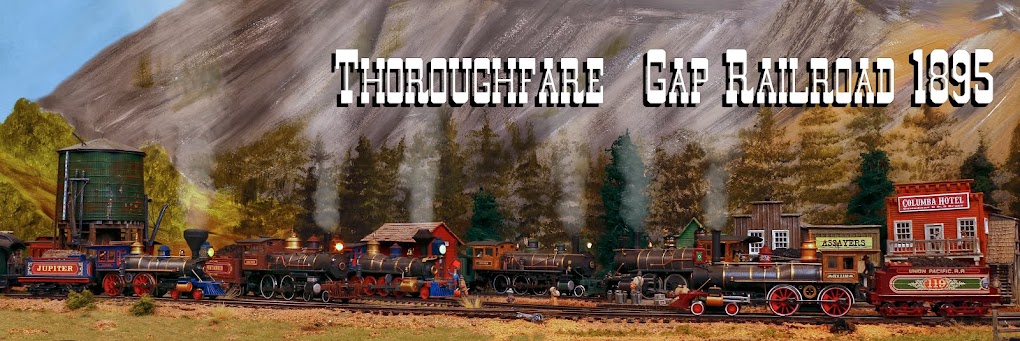When I was installing the Tsunami 2 sound decoders, I made some adjustments to Jupiter and Firefly.
Jupiter was the only engine to keep her factory paint job (except for her boiler jacket). The artwork on her tender was not very detailed and I decided to replace it with artwork based on John Ott's locomotive fine art prints. I arranged the artwork in a 'tender wrapper'. A single long piece of paper that would wrap around the Jupiter's tender and be trimmed to fit.
I tried printing the artwork on decal paper, following the same techniques I've used on all my previous tender artwork. However, I was not happy with the colour matching and ended up printing the wrapper onto plain copier paper. As this was all one piece and it followed the outline of the tender it fitted in inconspicuously.
Below are before and after photos of the Jupiter. There is alot more detail in the new artwork, the filigree is more intricate and the guilt shines brighter.
Research conducted by John and other locomotive historians seems to indicate the Jupiter had either a plain varnished wood cab or the cab was painted to represent varnished wood, with artificial wood grain painted on, which was apparently, a fashion trend at the time. The pilot and sand domes were possibly also red. At some stage it is likely I change these details on my model but for now I'm enjoying the new tender artwork.
 |
| Jupiter with her original tender artwork as delivered from the manufacturer (Though, the boiler is painted in this photo.) |
 |
| Jupiter wearing her new tender wrapper, based on John Ott's artwork. |
Firefly was my first kitbashed locomotive. It was also the first I repainted and made custom decals for and it shows a bit in the final finish. When I did the original kitbash I did not add a lighted headlight. Instead I painted the inside of the light silver to represent the reflector. The headlight also did not have a lens.
The headlights used in 1895 are oil lamps, which would burn whale oil or something similar. This was expensive and therefore railroads would only light the headlights for night running. Even though my trains don't run at night, I found I enjoy running with lights on, as I feel it adds some life to the locomotive. I justify their use due to the many tunnels on my layout.
When I added the Tsunami 2 to Firefly, I decided to finish the job properly and add an LED to the headlight. I also made a lens for the housing using acetate.
I liked the original sunflower style stack that came with the original IHC locomotive shell, but I always felt it was a bit thick looking. In any case it had to be removed to access the headlight and when I reassembled the locomotive I tried out a Congdon and diamond stack for looks. In the end I settled on the diamond stack.
 |
| Firefly with her original sunflower stack and dummy headlight. |
 |
| Test fitting the Congdon stack. |
 |
| Firefly fitted with her functioning headlight and diamond stack. |
When I get around to it, I'll find a good plastic friendly paint stripper and remove the paintwork on Firefly's cab and tender and start again. I'll definitely redo the tender artwork and use a similar method to what I used for the Jupiter.
I'm interested to hear which stack you prefer on the Firefly, the Sunflower, Congdon or Diamond? If you can suggest any good plastic friendly paint strippers I'd love to know.
